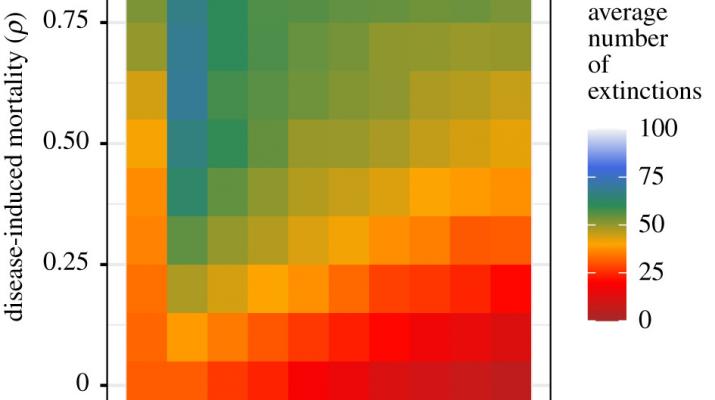
Abstract
Infectious diseases that kill their hosts may persist locally only if transmission is appropriately balanced by susceptible recruitment. Great apes die of Ebola virus disease (EVD) and have transmitted ebolaviruses to people. However, understanding the role that apes and other non-human primates play in maintaining ebolaviruses in Nature is hampered by a lack of data. Recent serological findings suggest that few non-human primates have antibodies to EVD-causing viruses throughout tropical Africa, suggesting low transmission rates and/or high EVD mortality (Ayouba A et al. 2019 J. Infect. Dis. 220, 1599–1608 (doi:10.1093/infdis/jiz006); Mombo IM et al. 2020 Viruses 12, 1347 (doi:10.3390/v12121347)). Here, stochastic transmission models of EVD in non-human primates assuming high case-fatality probabilities and experimentally observed or field-observed parameters did not allow viral persistence, suggesting that non-human primate populations are highly unlikely to sustain EVD-causing infection for prolonged periods. Repeated introductions led to declining population sizes, similar to field observations of apes, but not viral persistence.